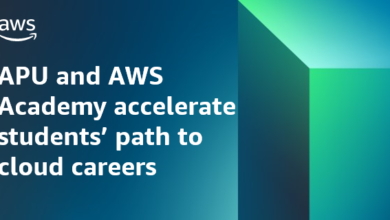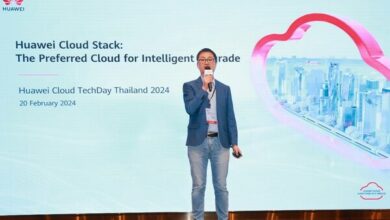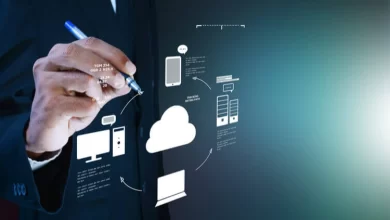Demystifying Desktop as a Service (DaaS) in Cloud Computing

Desktop as a Service, or DaaS, is becoming an increasingly popular solution for data integration, administration, storage, and analytics as more enterprises turn to the cloud to update their infrastructure and workloads. Companies that use DaaS can improve the agility of their data workloads, minimize time-to-insight, and improve the dependability and integrity of their data.
Learn what is DaaS in cloud computing, why and how businesses are using it, and how to get started with a cloud-first, DaaS-based data integration, storage, and management strategy.
What Is DaaS in Cloud Computing?
DaaS, or “Desktop as a Service,” is a cloud computing service that provides customers virtual desktops via the Internet. It refers to the delivery of virtual desktops to end users over the cloud, which is becoming a more common option in cloud computing.
DaaS in cloud computing allows users to access a fully working desktop environment, complete with operating systems, apps, and data, from any device with an internet connection. The virtual desktops are hosted in the cloud, often on public or private cloud infrastructure, and are maintained by a third-party service provider.
The service provider manages the virtual desktops’ maintenance, security, and software updates, allowing businesses to focus on their core activities rather than adding IT management to their list of issues.
How Does DaaS Work?
DaaS is a type of virtual computing that gives cloud workspaces to distant or mobile workers. Workers can use any device to connect to a virtual workspace that runs in the cloud when utilizing DaaS. They can work on a laptop, PC, or tablet. According to a recent analysis from the Citrix Service Provider Center of Excellence, the DaaS market has “matured and evolved” in recent years.
Key Features and Capabilities of Desktop as a Service (DaaS)
Desktop as a Service (DaaS) provides a number of critical characteristics and capabilities that make it an appealing solution for businesses looking for a flexible, secure, and cost-effective way to manage desktop environments. Let’s have a look at some of the key features and capabilities of DaaS:
1. Virtual Desktop Provisioning
DaaS enables users to quickly provision virtual desktop instances. These virtual desktops are hosted in the cloud and may be quickly installed, removing the need for actual hardware setup and configuration.
2. Accessibility from Any Device
One of the primary benefits of DaaS is its device independence. Users have the ability to access their virtual desktops from any internet-connected device, including laptops, desktops, tablets, and smartphones, giving them freedom and mobility.
3. Enhanced Security
DaaS providers deploy strong security measures to secure customer data and applications. The centralized design of DaaS allows for better control over access and security standards, lowering the risk of data breaches and illegal access.
4. Data Backup and Disaster Recovery
DaaS solutions frequently provide data backup and disaster recovery functionalities. Regular data backups and redundant storage systems ensure that user data is safe and accessible in the event of hardware breakdowns or other catastrophes.
Advantages of Desktop as a Service (DaaS)
Integrating a DaaS model into cloud computing offers substantial cost-saving benefits. Unlike legacy IT, which requires buying perpetual licenses for each company device, subscriptions often prove more economical. DaaS also trims expenses on security, tech support, and upkeep, as sensitive data resides in the cloud. In case of theft, resetting the password for the user’s cloud service suffices.
Use Cases and Applications of DaaS
Desktop as a Service (DaaS) offers several use cases and applications in a variety of sectors. Its adaptability, scalability, and cost-effectiveness make it an excellent choice for businesses of all sizes. Here are some significant DaaS in cloud computing cases and applications.
-
Enabling Remote Workforce
DaaS provides businesses to deliver secure access to virtual desktops for their remote or distributed workforce from any location with an internet connection. Employees can operate productively from home or other remote locations, improving productivity and work-life balance.
-
Businesses with Multiple Locations
DaaS delivers a centralized desktop management solution for enterprises with various branch offices or locations. Employees from several locations can access the same virtual desktop environment, promoting collaboration and standardization.
-
Development and Testing of Software
For their work, software development and testing teams frequently require distinct operating systems and settings. DaaS enables developers to have on-demand access to specialized development environments, optimizing their workflow and shortening the development cycle time.
How To implement DaaS-based Solutions?
Here’s a guide on how to implement DaaS-based solutions:
1. Determine the Needs and Requirements of the Business
Determine your organization’s specific demands and expectations. Learn about the number of users, their jobs, the applications they use, and the performance needs of those applications. This assessment will assist you in selecting the best DaaS provider and planning for necessary resources.
2. Select the Best DaaS Provider
Investigate and select a reliable DaaS provider that meets your business requirements. Consider security features, backup and recovery options, pricing structures, performance assurances, and customer support.
3. Network Assessment
Make sure your organization’s network infrastructure is capable of supporting DaaS. To ensure a smooth user experience, evaluate bandwidth requirements, latency, and potential bottlenecks. If necessary, upgrading the network will assist in avoiding connectivity issues.
Conclusion
Hope this article was able to give you a better understanding about Desktop as a Service (DaaS) in cloud computing. If you are looking to enhance your cloud computing skills further, we would highly recommend you to check Simplilearn’s Post Graduate Program in Cloud Computing. This program, in collaboration with Caltech CTME, can help you hone the right skills and make you job-ready.
If you have any questions or queries, feel free to post them in the comments section below. Our team will get back to you at the earliest.
FAQs
1. How does DaaS differ from traditional desktop infrastructure?
There are numerous important differences between DaaS and traditional desktop infrastructure:
Management: Whereas traditional desktop architecture requires individual management of each physical desktop by the organization’s IT team, DaaS provides centralized management by the cloud service provider.
Accessibility: DaaS allows remote access from any internet-connected device, whereas traditional desktops are typically restricted to specific physical locations.
2. How do I choose the right DaaS provider?
Consider Desktop as a Service (DaaS) offers when selecting a DaaS provider. As cloud services increase at an exponential rate, DaaS products have become a natural next step. Partnering with a DaaS provider enables the organization to rapidly and effectively develop and manage virtual desktops without requiring extensive in-house resources and funds.
3. Can DaaS solutions be customized according to business needs?
Yes, DaaS solutions can be customized to meet unique business needs. To accommodate the unique demands of enterprises, different DaaS providers give varying levels of customisation.
4. Is DaaS suitable for small businesses?
Yes, DaaS is an excellent alternative for small enterprises. It has various advantages that are well-suited to the needs and limits of small businesses.
5. What are the cost considerations for adopting DaaS?
DaaS enterprises often offer a pay-as-you-go pricing model, in which organizations pay monthly for the resources and virtual desktops they utilize. This concept enables businesses to scale resources based on their need and only pay for what they use.
6. What are the limitations of DaaS?
DaaS may not be appropriate for certain limitations of resource-intensive or graphics-intensive applications, such as 3D modeling, video editing, or high-performance gaming. These applications may demand more significant CPU power and dedicated GPU resources, which may not be efficiently given by a virtual desktop environment.



